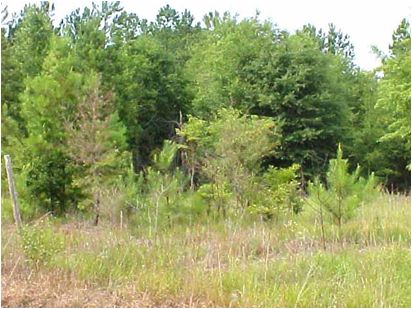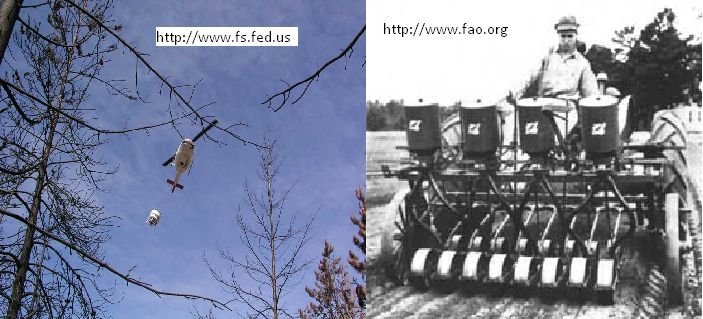Forest Wildlife Management and Conservation
| Author: | LeRoy Humphries |
| Level: | High School |
| Content Area: | Biology, Environmental Science |
| Author: | LeRoy Humphries |
| Level: | High School |
| Content Area: | Biology, Environmental Science |
Trees are considered a renewable resource because they grow back! After the timber has been harvested from an area what happens? The land can be returned to production by reseeding the area. How is this accomplished? There are a variety of methods for reseeding. A few are listed below.
Natural Seeding is the process of allowing a timbered area to repopulate naturally. This is called secondary succession, where an area regenerates itself after some sort of disturbance. If sufficient seed trees are left the forest can regenerate within a few short years. While it is economically efficient (meaning it saves money...) the forester cannot control the types of plants that grow there and, if the cleared area is large, it may take a long time for natural reseeding to occur, and there will not be straight rows of trees.

Direct seeding is the direct application of tree seeds to an area that has been timbered. This process can be accomplished by hand, using tractors (either with seed spreaders or grain drills), or even from aircraft! It is a bit faster than natural seeding, but more expensive, and, like natural seeding, may not result in straight rows of trees. The results can vary greatly, depending on the method of seed placement.

Planting Seedlings from a tree nursery is the most certain and quickest way to get a stand of timber growing again. Seedlings may be obtained at a relatively low cost and can be replanted by hand or using tractors. Below is a list of the advantages and disadvantages to this method.
|
Advantages |
Disadvantages |
|
Complete control over species |
Introduced trees may not do as well as native species |
|
Easy selection of tree varieties |
High initial investment (costs) |
|
Can plant new tree species not already present in an area |
Reduced genetic variability may make the timber stand more susceptible to disease and/or insect infestation |
|
The forest is replenished in less time compared to other methods |
|
|
Less erosion due to rapid replenishment |
|
|
Spacing of trees can be controlled |
|
|
Creation of a pure and even-aged timber stand |
|
|
Trees are healthy and may be genetically superior |
|
So, you can see that there are a variety of methods for replanting a forest. Which one to use? That question is best answered by looking at several factors. How much money is the landowner willing or able to spend? What are the long-term goals of the landowner? How large is the area to be replanted? How difficult is it to access the area? Can you think of any other considerations in choosing the method of replanting?
Now, let's take a look at a few cases and see if you can choose the best method of replanting.